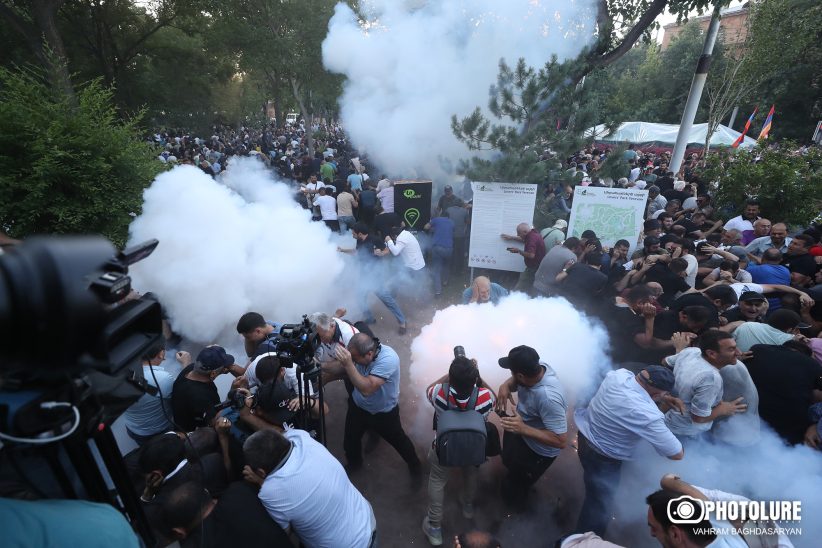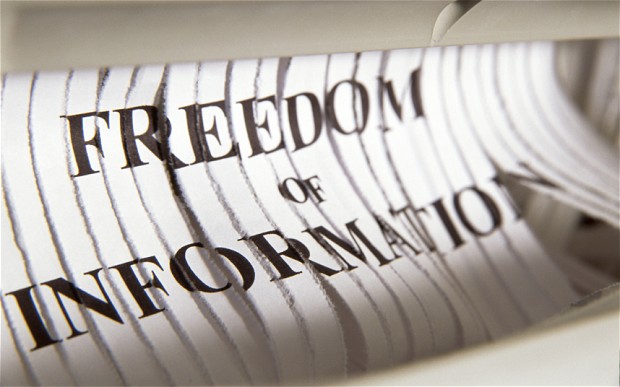2017 was an intense and complicated period for the Armenian media outlets, and the reason was elections to the Armenian Parliament, Yerevan City council and local self-governing bodies. During such a period the intra-political struggle usually gets heated up, which is also associated with increase in cases of various types of violence and pressure on the mass media representatives. This fallacious tradition continued both during the elections to the Parliament, and to Yerevan City council.
In particular, during the period including the campaign for the parliamentary elections, the CPFE recorded three cases of physical violence against the journalists and six cases of impeding their activity. On the actual election day, on April 2, two cases of physical violence against journalists were recorded, and eight cases of impeding professional activity.
During the elections to Yerevan City council on May 14, two cases of physical violence and five cases of various impediments were recorded. Three more cases of violating the journalists’ rights (one case of violence and two cases of impediment) took place during the campaign period preceding the election.
A number of Armenian news organizations, with initiative by CPFE, made a statement condemning the violence against the journalists covering the elections, and required to charge those who are guilty
Observations of further processes showed that this time as well, the authorities do not take seriously the facts of violating the journalists’ rights, and do not intend to take relevant measures. Out of 29 cases of violence and impediments recorded during elections to the Parliament and to Yerevan City council and preceding campaign, only in case of seven criminal cases were filed, of which five were closed with the fictitious formulation “absence of corpus delicti”, and only two cases reached the court.
The same ineffective and fictitious approach is noticed in the pre-investigation of events related to two criminal cases related to mass violence against the journalists: 2015, June 15, Yerevan Baghramyan Avenue (#ElectricYerevan) and July 29-30, 2016, Khorenatsi street and Sari Tagh in Yerevan. The number of charges, brought within the scope of those cases (4 and 9 respectively), speak of the fact that the measures undertaken are not at all equivalent to the scope of violence used against the media representatives on those days.
Whereas, international instances – the European Court and UN Human Rights Committee have received and recorded the complaints by three journalists recognized as victims in #ElectricYerevan case (Tehmine Yenokyan, journalist from “Lragir.am”, Hakob Karapetyan, journalist from “iLur.am” and freelance photographer Gevorg Ghazaryan), considering justified their arguments about ineffectiveness of the pre-investigation. Moreover, the UN Human Rights Committee has already circulated the complaints by the two Armenian journalists. This is a very important precedent for the aspect of human rights protection. Complaints by Mariam Grigoryan, journalist from news site “1in.am” and freelance photographer Gevorg Ghazaryan, who underwent violence during July 29-30, 2016 in Sari Tagh, were also sent to the aforementioned international instances. The Committee to Protect Freedom of Expression acts as their advocate.
Facts of using force against media representatives and impeding their professional activity were also recorded during the relatively quiet period of the year. In 2017 as a whole, the CPFE recorded 11 cases of physical violence against the journalists, 113 cases of various types of pressure against the mass media and their representatives and 62 cases of violating the right to receive and disseminate information.
2017 was unprecedented in terms of the number of new court cases against media and the journalists. 30 court cases were brought against “Union of Informed Citizens” NGO, founder of “Sut.am” news website, and its coordinator Daniel Ioannisyan. All of them refer to the sensational publication on that website on March 24, in which they disclose the enrollment of votes by school and kindergarten directors during the pre-election period, via using the administrative resource in favor of the RPA. Each lawsuit claimed refuting the information considered slander and payment of AMD 2mln as reimbursement. Right after the first court session, the claims were taken back.
In terms of the year, the number of court cases with engagement of media and/or journalists, reached 60. They all are under Article 1087.1 of the RA Civil Code – insult and slander.
During the first half of 2017, the journalistic organizations and media outlets actively discussed the new draft Law “On freedom of information” drafted at the RA Ministry of Justice. The document created serious objections. The CPFE and partner organizations do not see any need for a new law. They believe that the current Law “On freedom of information”, which is much more liberal and advanced by its morale and principles than the circulated draft law, should be updated taking into consideration technological developments and new realities. This can be done through drafting a law on making changes and amendments in the law, for which they propose to establish a joint working group, which would include experts from the Ministry of Justice and specialized non-governmental organizations.
At the end of 2017, media organizations also strictly criticized the new draft Law “On TV and radio”. It was also drafted without engaging specialized non-governmental organizations in the process. According to CPFE, Yerevan Press Club and the Media Initiatives Center, when making the document no reflection was made on the problems in the field, which have accumulated and got deeper during the past years. The three journalistic organizations made a statement demanding to review the bill, taking into consideration the recommendations and approaches by public, specialized non-governmental organizations as well as international experts.
In 2017, the tender for licensing the operation of the private multiplex, organized by the National Commission on TV and Radio, failed because of the absence of applicants. This fact is another proof that the conditions to create a private network of digital broadcasting, which were mechanically moved to the new draft, are unacceptable, and the criticism by the media organizations is justified. Another batch of noteworthy events related to broadcasting were the tenders for radiobroadcasting through digital network announced by the NCTR. The total number of national, metropolitan and regional/local radio-companies is 18, and the same number of applications were submitted. This means that none of the 18 tenders was competitive, which speaks of unhealthy condition of this field.








